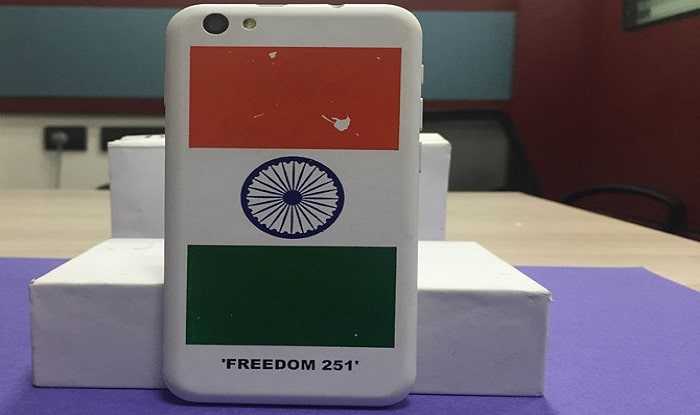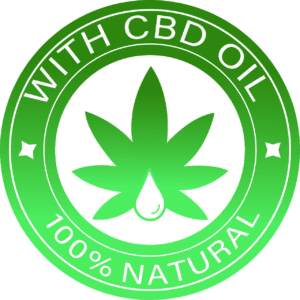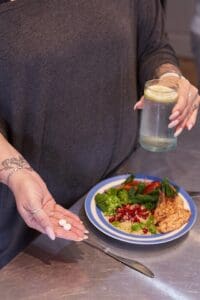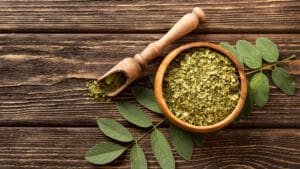
We are led to believe that freckles are adorable in children, but freckles are really the first sign of sun damage. In adults, they are considered “age spots” but really have nothing to do with age, only the amount of time the skin has been exposed to sun. It’s a fact that sunlight is a major culprit of wrinkles, dryness and age spots, with more than 90 percent of skin-aging effects being caused solely by the sun. Skin health is a representation of our inner health. Spending all those hours in the gym isn’t going to pay off if you don’t have healthy, supple, glowing skin to showcase your toned muscles.
All sunscreens are not created equal. Let’s first take a look at the two most common types of ultraviolet (UV) rays – UVA and UVB. While both rays can harm the skin and lead to skin cancers, UVB rays are the “burning” rays effectively blocked by glass. UVA rays are deeper-penetrating, “aging” rays that can pass through glass and lead to collagen damage, wrinkles and sagging.
Sun protection factor (SPF) indicates how long it will take for the UVB rays to redden skin when using a sunscreen, compared to how long skin would take to redden without the product. For instance, someone using a sunscreen with an SPF of 15 will take 15 times longer to redden than without sunscreen. Higher SPF products do not give proportionate protection – with a SPF 15 screening 93 percent of UVB rays, a SPF 30 screening 97 percent and a SPF 50 screening 98 percent. So, an SPF 30 product applied adequately will block about as much UVB as any higher SPF product.
While SPF rating indicates how well a product will protect the skin from UVB, there is no current rating system for UVA protection. There are currently 17 active ingredients approved by the FDA for use in sunscreens. Some provide a physical barrier, using minerals, while others provide a chemical barrier that works by absorbing ultraviolet rays (UVR). Most are chemical sunscreens, which work by absorbing the UVR before it penetrates the skin. The longer you are in the sun, the more quickly these chemicals break down, becoming ineffective. They also do a poor job at blocking the UVA rays. The physical sunscreens, zinc oxide and titanium dioxide, are insoluble particles that effectively reflect both UVA and UVB away from the skin. The effectiveness of these products relies solely on how thickly they are applied. When applied properly, they are excellent at blocking the entire spectrum of both UVA and UVB rays.
Since most sun damage occurs during the cumulative effect of UV exposure during daily activities, apply a physical sunscreen daily first thing every morning. Treat your neck, chest and the back of your hands daily with your face and always apply makeup over, not under, sunscreen. Since we know that UVA penetrates through windows, sunscreen is mandatory even if you work indoors. Even 10 minutes of UV exposure daily adds up to over 50 hours a year – would you go to the beach for 50 hours without sunscreen? Well, that is what happens if you don’t protect your skin daily. It is like that extra cookie daily adding up to an extra 10-20 pounds on your waistline in a year.
Protection through diet and supplements. The good news is that many of the healthy nutritional choices you make for your body will also benefit your skin. Consuming antioxidants found in açai berries, blueberries, goji berries, pomegranate, turmeric, tomatoes, carrots and green tea can internally protect skin from UV damage and give you a natural, rosy glow.
Water. Hydrated skin is a necessary component to preserving that glow. Water will both hydrate your skin and flush out toxins that can spoil your complexion.
Lycopene. The red pigment found in some fruits and vegetables soaks up free radicals, preventing DNA damage, and has been proven to increase the skin’s natural SPF by one-third. Foods high in lycopene include watermelon, tomatoes, papaya, pink guava, red bell peppers and pink grapefruit. Cooked tomatoes with olive oil are absorbed best.
Leafy greens. Spinach, Swiss chard and kale contain lutein and zeaxanthin. These nutrients scavenge and destroy free radicals, which have been shown to reduce the risk of developing skin cancers.
Healthy fats. Nuts, flaxseeds, wild fish and avocado contain essential fats to keep your skin moist and supple.
Cocoa. >80% dark chocolate contains high levels of antioxidants that assist in UV protection. Milk should not be added to the chocolate, as it interferes with the absorption of these antioxidants.
Green and black teas contain polyphenols, offering unrivaled protection from free radical exposure. My absolute favorite is ceremonial-grade matcha tea without added sugar.
Astaxanthin is a colorful, fat-soluble pigment found in microalgae (chlorella, spirulina), yeast, salmon, trout and shrimp. Wild sockeye salmon has the highest concentration and this amazing, powerful antioxidant imparts a vibrant color to the skin while simultaneously being one of the most powerful antioxidants protecting both the skin and eyes against UVR.
Carotenoids provide pigment to fruit and vegetables that act as a natural sunscreen by these plants. Foods such as apricots, papaya, mango, carrots, sweet potatoes and beets contain high levels of protective carotenoids, while also imparting that healthy, youthful glow to your skin.
Avoid Sugar. Glycation occurs when sugar damages the collagen and elastin in the skin (as well as other organs), making these structures become rigid. This process causes the skin to lose its natural, supple appearance and results in sagging and sallow skin with wrinkles. Sugar also causes low-grade inflammation, leading to breakouts and facial redness. Sunlight enhances this irreversible process. Think carbs + heat = brown (i.e., burnt toast)
Heliocare and Sunsafe Rx supplements: These two available supplements contain an extract from the South American Polypodium leucotomos fern and may shield the skin from UVR that sneaks past sunscreen. While they should not be used to replace sunscreen, they can help prevent radiation damage at the DNA level and help treat and prevent pigmentation conditions.
Tanning beds versus spray tans. While those rays may feel sensational, the effects of sun exposure may kill you. Indoor tanners are 74 percent more likely to develop melanoma. Tanning beds primarily expose you to the UVA “aging” rays, while avoiding the UVB “burning” rays that warn you of too much sun exposure. In the past 40 years, indoor tanning has contributed to a 500 percent increase in occurrences of melanoma in young people ages 18-39. Dermatologists see genital melanomas more frequently due to this exposure.
Spray tans are a safer way to achieve a “sun-kissed glow.” Spray tans do pose the risk of inhalation and ingestion, so it is important to protect these areas. Commercial preparations in topical creams, lotions or towelettes typically contain 3-5 percent DHA, a sugar molecule that bronzes the top layer of the skin (this is why thicker areas of the skin, such as the palms, soles, elbows and knees, uptake more of the product). Exfoliating prior to application will provide more even results. The browning effect occurs within a few hours and lasts about 7-10 days, gradually fading as those layers naturally exfoliate. The concentration of DHA used in sunless tanning products is generally considered safe when applied topically. High concentrations of DHA have shown to correlate with the production of free radicals that can damage cells, which is why it is important to avoid inhalation, ingestion and contact with broken skin. They will also not work as a sunscreen and you can still burn.
Summer Skin Survival Pearls
- Choose a sunscreen with SPF 30 containing zinc oxide, and apply generously daily to all exposed areas. Wear a hat and sunglasses when outdoors.
- Avoid tanning salons to keep skin dewy, glowing and unblemished.
- Hydrate, enjoy healthy fats and choose a rainbow of colorful foods to brighten your complexion and protect your skin internally.
- Avoid processed foods and sugars, as these will make your skin dehydrated and sallow.
- Like any nutrition or exercise plan, it is your commitment to the little daily rituals that will make a huge difference over time.
If you have a “burning” question to ask, please email me at [email protected] and your question may be posted in a future article.
References:
American Academy of Dermatology, www.aad.org
Gilchrest BA. Skin and aging process. CRC Press. 1984; 124.
Guerin M, Huntley ME, Olaizola M. Haematococcus astaxanthin: applications for human health and nutrition. Trends Biotechnol. 2003 May;21(5):210-6.
Hughes MCB, Williams GM, Baker P, Green AC. Sunscreen and prevention of skin aging: a randomized trial. Ann Intern Med 2013 June; 158(11):781-790
Robinson, JK. Sun exposure, sun protection, and Vitamin D. JAMA 2005; 294:1541-43
The Skin Cancer Foundation, www.skincancer.org
Source Link – https://www.fitnessrxwomen.com/life-health/beauty-style/healthy-summer-skin/





